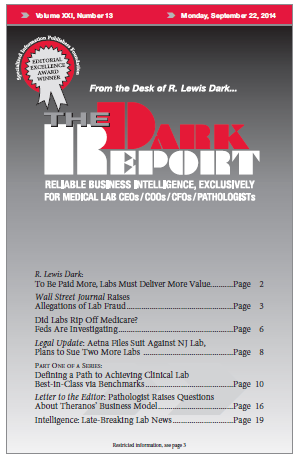CEO SUMMARY: With the American healthcare system undergoing a major transformation, it is essential that all clinical laboratories and pathology groups recognize this transformation and effect the right strategies to meet the needs of physicians, patients, and payers. A group of lab collaborators proposes a four-level laboratory value pyramid as an effective roadmap to guide …
Defining a Path to Clinical Laboratory Best-in-Class via Benchmarks Read More »
To access this post, you must purchase The Dark Report.


